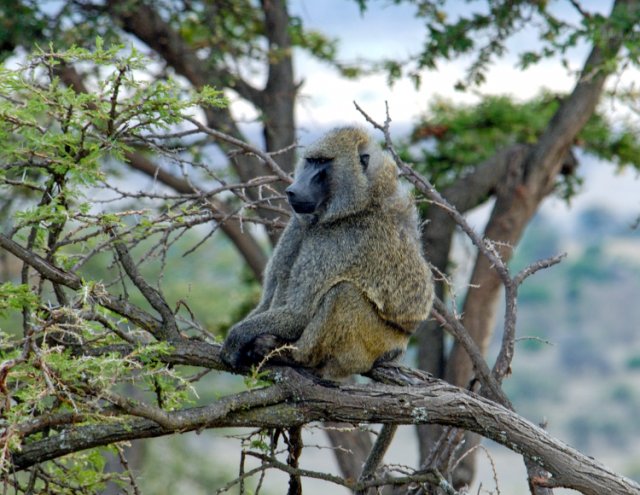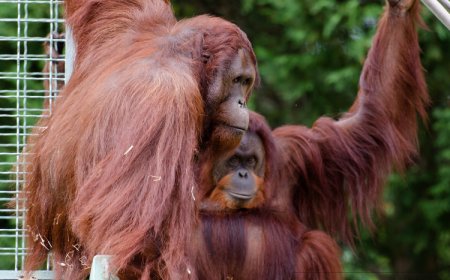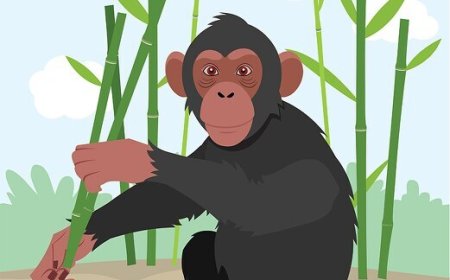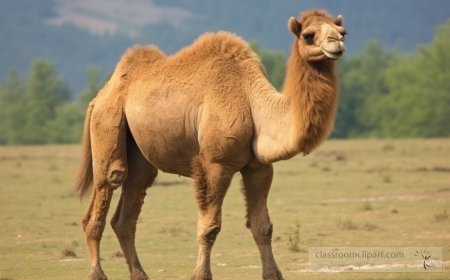All About Baboons for Students: Social Primates of the Savanna
Discover the world of baboons in this educational article for students. Learn about their complex social lives, habitats, diet, and clever behavior. Includes vocabulary, quiz, and kid-friendly summary.

🐵 Baboons: Social Primates of the Savanna
Baboons are some of the most fascinating and intelligent monkeys in the world. Known for their strong jaws, dog-like faces, and bold personalities, baboons are members of the primate family and are closely related to both monkeys and apes. They live in large, noisy groups and display some of the most complex social behavior found in any wild mammal.
These adaptable animals are native to Africa and parts of the Arabian Peninsula. Because they can live in many different environments—ranging from grassy plains to rocky deserts—baboons have become one of the most widespread primate species on Earth. Their ability to work together in groups, use vocal communication, and even form friendships makes them a favorite topic for scientists studying animal behavior.
🌍 Habitat and Distribution
Baboons are found throughout sub-Saharan Africa and into southern Arabia. There are five species of baboons, each adapted to a different region and environment:
- Olive baboon (Papio anubis) – found in savannas and forests across central Africa
- Yellow baboon (Papio cynocephalus) – lives in East Africa’s woodlands and grasslands
- Chacma baboon (Papio ursinus) – the largest species, found in southern Africa
- Guinea baboon (Papio papio) – lives in West African savannas
- Hamadryas baboon (Papio hamadryas) – lives in rocky deserts of the Horn of Africa and the Arabian Peninsula
Baboons are extremely adaptable. They live in savannas, open woodlands, rocky cliffs, and even mountainous regions. They are often seen near water sources and are known to enter human farmland in search of food, which can cause conflict.
🍌 Diet and Feeding Behavior
Baboons are omnivores, which means they eat both plant and animal foods. Their diet is one of the most varied among primates. They forage during the day, moving in groups across the landscape while constantly searching for food.
Most of their diet includes:
- Fruits, seeds, leaves, roots, and grasses
- Insects, bird eggs, lizards, and small mammals
- In some cases, they hunt and eat young antelope or monkeys
Baboons have powerful jaws and large canine teeth, allowing them to eat tough food like bark and roots. They use their hands skillfully to peel fruit, dig for roots, and even open containers when living near human settlements.
Feeding is often a social activity, with group members foraging together and young baboons learning what to eat by watching adults. Food can sometimes cause tension, and dominant individuals may steal from others.
👥 Social Life and Group Behavior
Baboons are highly social animals and live in groups called troops that can range from 20 to over 100 individuals. Their society is based on rank, and each baboon knows its place in the troop.
Troops include:
- Adult males (often dominant or competitive)
- Adult females (who stay in the same troop for life)
- Young baboons of all ages
Baboons use a wide range of vocal calls, facial expressions, gestures, and body language to communicate. They bark to warn of predators, grunt to greet each other, and scream during fights. Grooming is especially important—it helps keep fur clean and builds friendships between group members.
Males may fight to become dominant, while females form strong bonds with relatives and raise their babies together. In some species, like the hamadryas baboon, one male leads a small group of females and defends them from other males.
🍼 Life Cycle and Reproduction
Baboons do not have a fixed breeding season and can give birth at any time of year. When a female is ready to mate, her rump swells and turns pink or red, a signal to the males that she is fertile.
After mating, the pregnancy lasts about 6 months. A single baby is born, with a tiny face and black fur. The mother holds her infant close to her chest for several weeks. Later, the baby climbs onto her back to ride as the troop moves around.
Young baboons stay with their mothers for up to a year and continue to nurse while they learn how to forage and socialize. Female baboons often stay in the group they were born into, while males usually leave as teenagers to find a new troop.
Baboons become adults at around 5–8 years old and can live up to 30 years in the wild and even longer in captivity.
🧠 Intelligence and Adaptability
Baboons are considered among the most intelligent non-ape primates. They solve problems, learn from others, and adapt their behavior based on experience. In areas with farms or tourist activity, baboons have learned how to steal food, open doors, and even unzip backpacks!
They use tools occasionally (such as using sticks to gather insects or dig for food) and are quick to find new food sources. Young baboons learn by watching older ones, showing a kind of cultural learning that’s rare among wild animals.
Because of their smarts, baboons have both advantages and challenges—they survive well in human environments, but they’re also seen as pests and are sometimes hunted or chased away.
⚠️ Threats and Conservation
Most baboon species are not endangered, but they face growing threats in the wild.
🌍 Major challenges include:
- Habitat loss from farming, logging, and development
- Conflict with humans, especially when raiding crops
- Hunting for bushmeat or local medicine in some regions
- Capture for the exotic pet trade or research
Despite these pressures, baboons have large populations and are very adaptable. Conservation efforts focus on:
- Protecting habitats through national parks and reserves
- Educating farmers on how to avoid conflict
- Supporting research on baboon behavior and ecology
- Promoting eco-tourism that benefits both baboons and local communities
🎉 Fun Facts About Baboons
- Baboons have 32 teeth, just like humans!
- The chacma baboon is the largest, reaching up to 90 pounds (40 kg)
- Baboons often sleep on cliff faces or in tall trees to avoid predators
- A baboon’s yawn is often a sign of aggression—not sleepiness
- In ancient Egypt, baboons were sacred animals linked to wisdom
🧠 Vocabulary List
- Troop – A group of baboons living together
- Dominance – A social ranking system based on power
- Forage – To search for and collect food
- Omnivore – An animal that eats both plants and animals
- Gestation – The time a baby grows in its mother’s womb
- Grooming – Cleaning and bonding behavior between animals
- Rump swelling – A visual sign in female baboons of fertility
- Conflict – A problem or disagreement between animals or people
- Cultural learning – Passing knowledge from one generation to another
- Habitat loss – Destruction of an animal’s home environment
🧒 Kid-Friendly Summary
Baboons are smart monkeys that live in big groups called troops. They live in Africa and eat all kinds of food—plants, bugs, and even meat. They have strong hands and sharp teeth, and they love to groom each other to stay clean and be friends. Baboons are very clever and even learn from watching one another.
Some people don’t like baboons because they raid crops or get into trash, but they are just trying to survive. If we protect their homes and treat them with respect, we can share the planet with these amazing animals!





















































